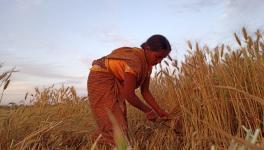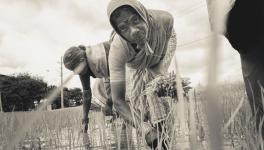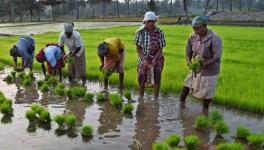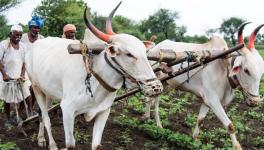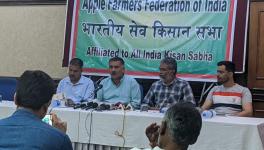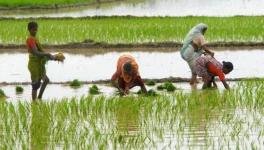Depleting Ground Water Level Forces Punjab Farmers to Shift From Paddy
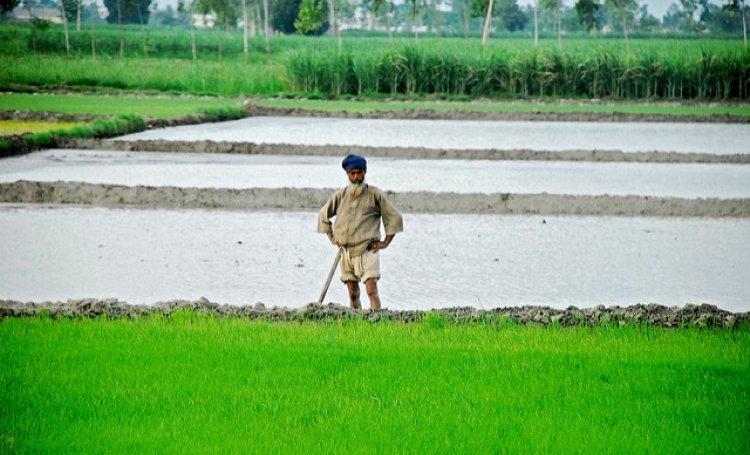
With a decline in the yield from paddy, Punjab farmers are now forced to shift away from their traditional crop. As there is a rapid decline of the ground water level in many parts of the state, farmers are finding it difficult to cultivate paddy since it is a water-guzzling crop.
Decline in groundwater naturally leads to deepening of tube well and investing in a more powerful pump to get water, which increases the financial burden of farmers. So, farmers are opting for the crops that can be cultivated with less water including maize, cotton and basmati.
Gurmali Singh, a 48-year-old farmer from Bhathadua village in Ludhiyana district, who had been cultivating paddy for last three decades had to shift from the crop because of the decreasing ground water level. He was quoted as saying in the Economic Times, “Groundwater has depleted too deep around the village to grow paddy, and another crop loss would push my family deep into debt.”
“Maize required just two rounds of irrigation as rains were adequate this year, unlike for paddy where 10-20 times more water is required,” he said.
Recent studies and reports have predicted a grim scenario in Punjab since over-exploitation of sub soil water—water found immediately below the top soil—happens across 79 % of the state. The water level in the state is depleting at a rate of 51 cm per year at present. The studies suggest that if the rate of decline continues at the same level, the state would probably turn into a desert.
According to a study by the Central Ground Water Board in 2017, 10 districts including Bathinda, Hoshiarpur, Jalandhar, Moga, Pathankot and Patiala, are worst affected with a fall of nearly a metre a year. In fact, only 16% of the state is in a safe zone.
The figures from state agriculture department, however, claim that out of 35.78 billion cubic metre water extracted from the ground, 96.65% is being used for paddy cultivation. The figures also claim that only 0.53% is being used for industrial purposes and 2.82% for domestic purposes.
But, the farmers bodies say that they alone are being blamed for this, while industry and domestic users are over-exploiting the subsoil water.
This year, farmers have sown 3 lakh hectares less paddy than previous years. Punjab farmers alone contribute a tenth of India’s total staple grain production. Moreover, Punjab, along with Haryana, is the one of the largest producers of wheat.
According to Additional Chief Secretary Vishwajeet Khanna, cotton has been planted in around 1.4 lakh hectares more land than last time in the state. While, the area for maize and basmati has been increased by 60,000 hectares and 1.2 lakh hectares, respectively.
Earlier the Haryana government had launched a new scheme for the replacement of water intensive non-basmati paddy by maize and other crops as an attempt to arrest the depleting ground water table.
Also read: Haryana Govt. Wants Farmers to Leave Paddy Cultivation to Arrest Depleting Groundwater Table
But, the farmers in Haryana were sceptical about the new scheme since it had no clarity about the procurement process. In the initial phase, 50,000 hectares of the non-basmati area had been identified to implement the new scheme.
One of the farmers, Sultan Singh, a 43-year-old farmer from Bir Amin village, had said, “Our village gets waterlogged in the rainy season, which is good for paddy, but not for maize or pulses. In fact, a good rain destroys maize.”
“Moreover, maize attracts Neelgai (Asian Antelope), which often destroys the crops here,” he had added.
As per Haryana government’s data, maize required only 4 times irrigation- even less if there are sufficient rains, whereas rice requires 40-45 times irrigation in general. To produce 1 kg of rice, 2,000-5,000 litres of water is required – depending upon the soil types and time of sowing. “We can save at least 30 lakh litres of water per hectare from the nursery raising and puddling per hectare of rice crop. Rice requires 190-220 cm/Hectare(1 cm = 1 lakh litres of water) whereas maize requires 60-80cm/Hectare and we can save 142 cm/Hectare water. Thus a lot of water saving with maize cultivation can be a solution for the above problems,” the government data further reads.
Both in Punjab and Haryana, farmers are relying on maize, cotton, etc., as the alternative for paddy cultivation. While a research done by the Water Footprint Network reveals that producing one kilogram of cotton in India consumes around 22,500 litres of water on an average.
Interestingly, the water technologists at the Indian Agricultural Research Institute in New Delhi, however, say that no more than 600 litres of water is needed per one kilogram of paddy, if proper water management techniques are followed for the cultivation.
So, as BR Sharma, who coordinates an all-India research project on water management, said “optimising irrigation water use should be our aim,” rather than putting the farmers into uncertainty.
Get the latest reports & analysis with people's perspective on Protests, movements & deep analytical videos, discussions of the current affairs in your Telegram app. Subscribe to NewsClick's Telegram channel & get Real-Time updates on stories, as they get published on our website.









